2024
Mars Global Simulant (MGS-1), high density urethane foam, and fragments of floormats from a ‘93 Honda Accord SE.
diptych, each 19 x 29 x 2 inches
2025
Mars Global Simulant (MGS-1), high density urethane foam, fragments of floormats from a ‘09 Honda CRV.
66 x 42 x 15 inches each
Manufactured from minerals vastly distributed on Earth's surface to simulate soils found on another planet, Mars Global Simulant (MGS) is a standard analog based on data collected from the Mars Science Laboratory Curiosity rover. Adopted for research, simulants are used to explore the mineralogical and atmospheric composition of other planets, as well as their "engineerability", asking deep questions about the material make-up of the universe, while speculating on the potential to one day inhabit, terraform, colonize, or otherwise exchange with or extract from other planets.
In this series titled "Salvages", I explore the hyperdislocated and composite qualities of simulants to collage and digitally reconstruct planetary terrain, exploring place, ground, bodies of water, traces of ecology and human imprints on the landscape. Sourced from 3D scans of multiple sites, the dimensions of these works extend across the spawning grounds of horseshoe crabs in the Delaware Bay, to the floor mats of flood salvaged cars, to riverbanks spanning the Mississippi Watershed from the Allegheny to the Kaw River.
.jpg)
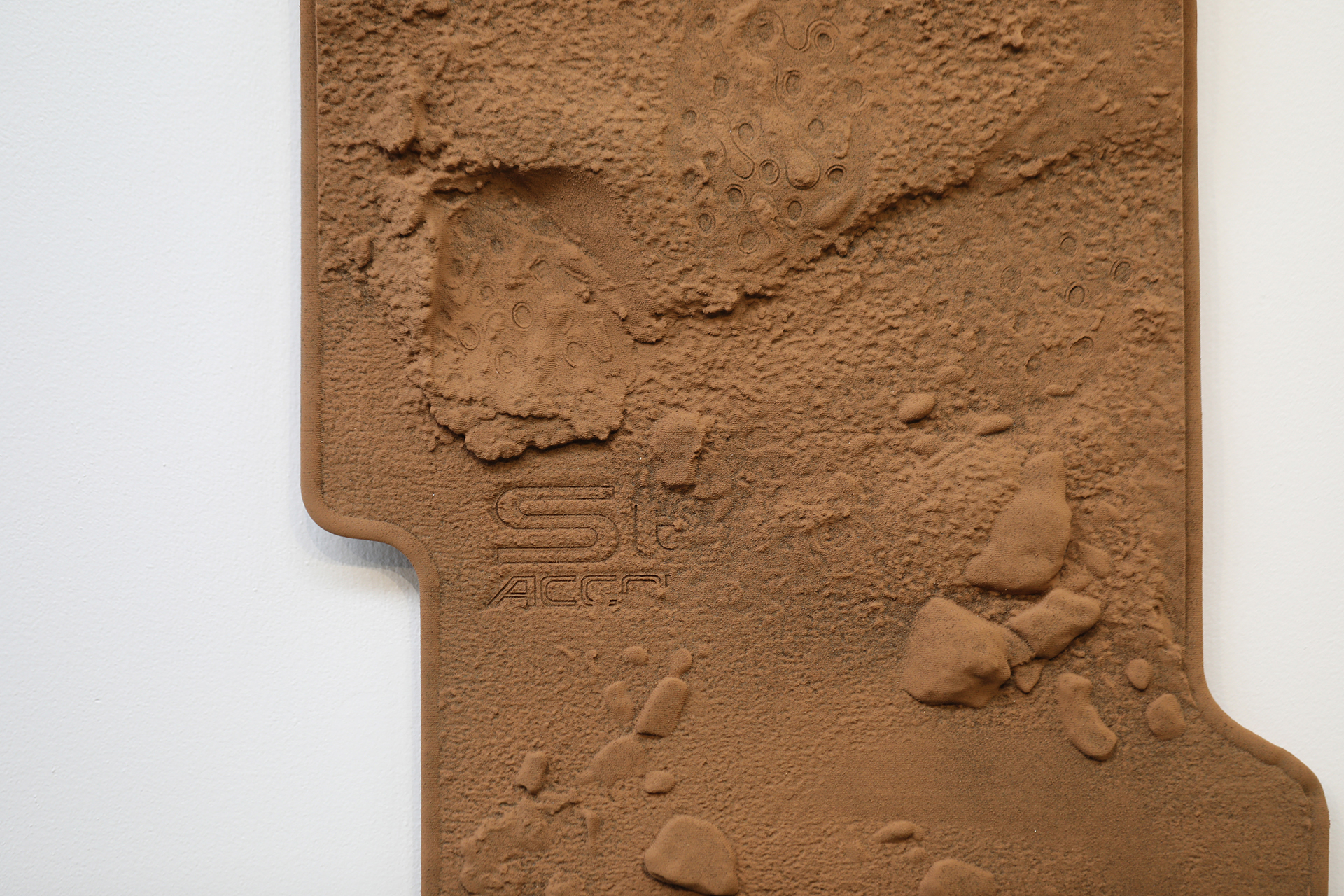
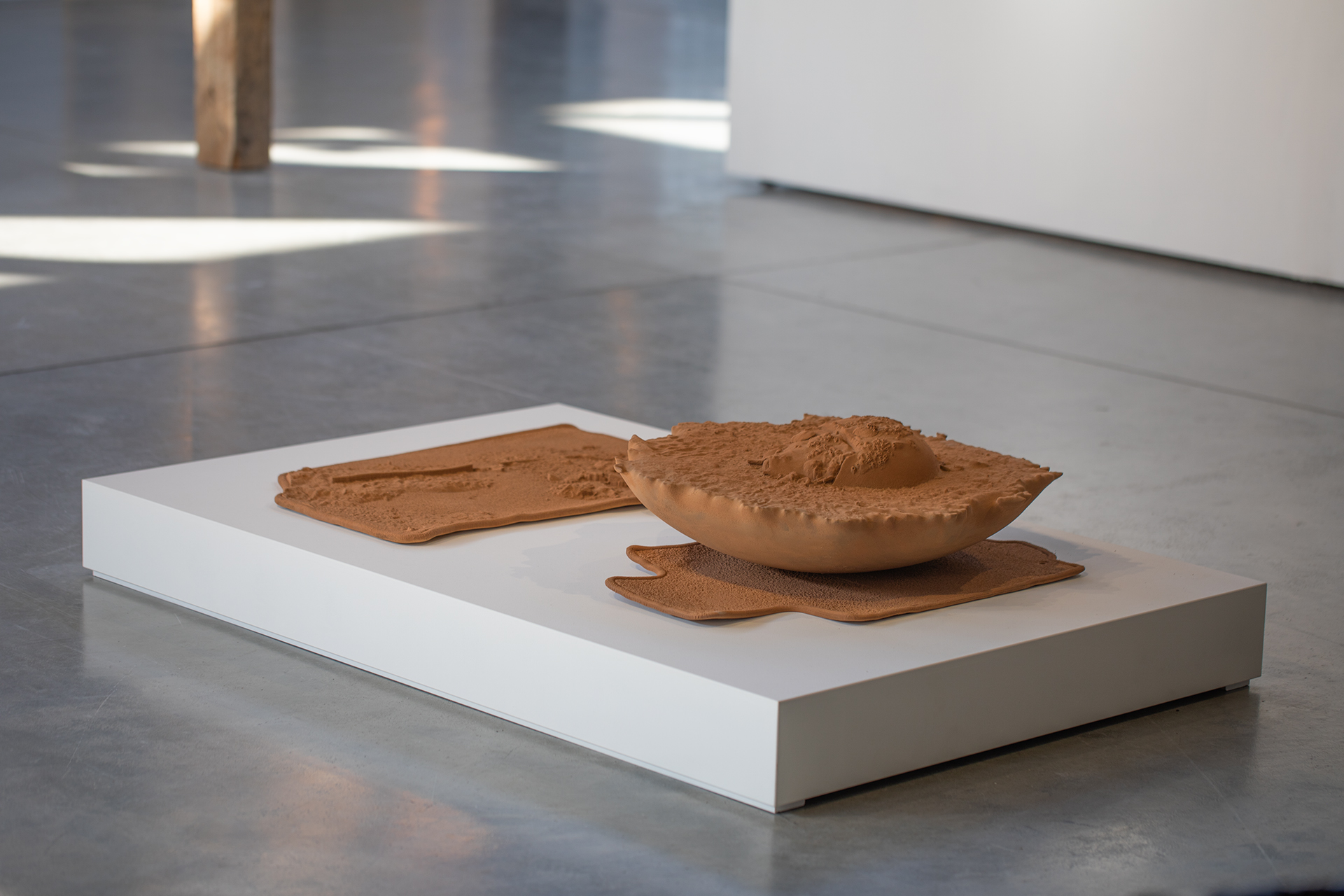
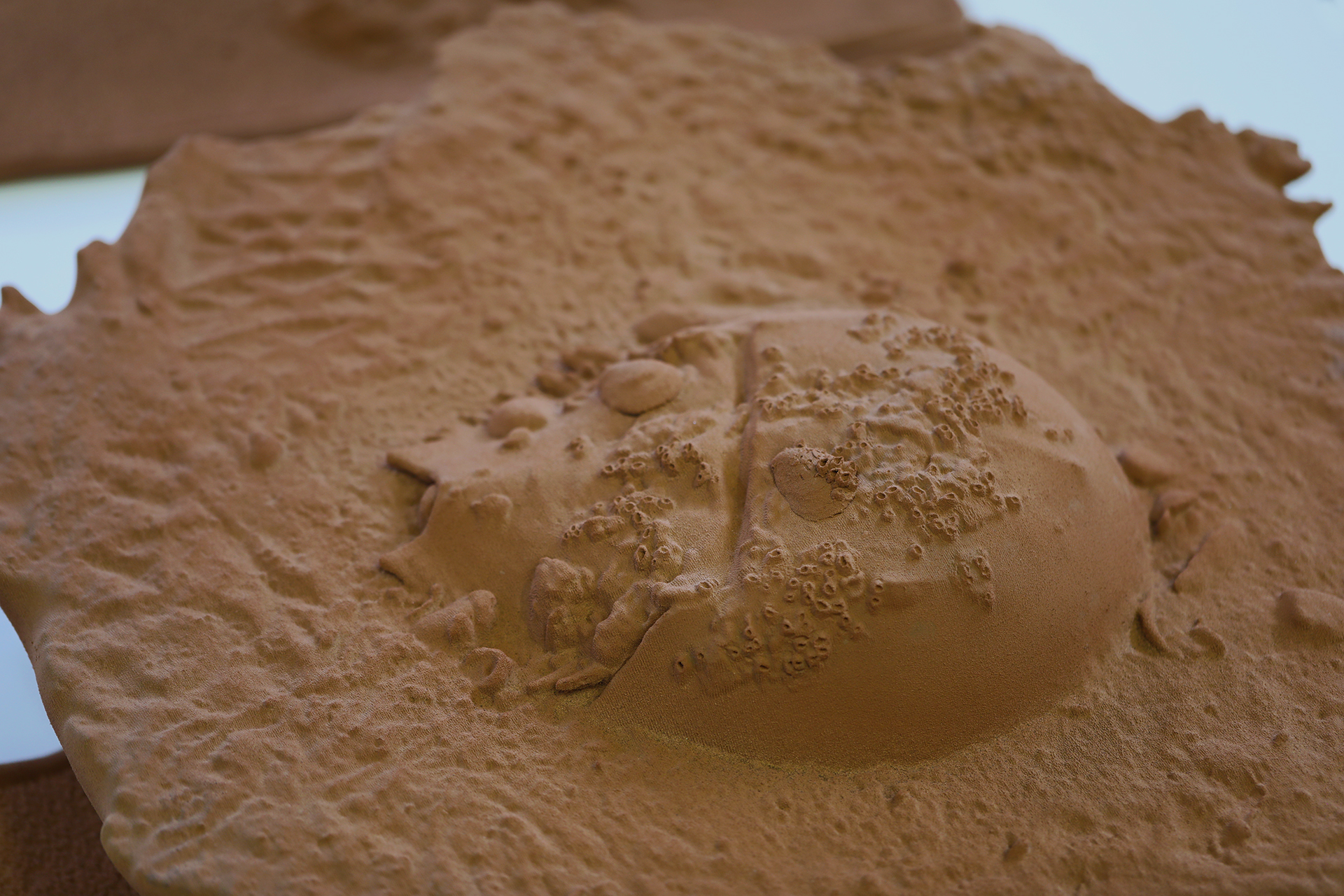
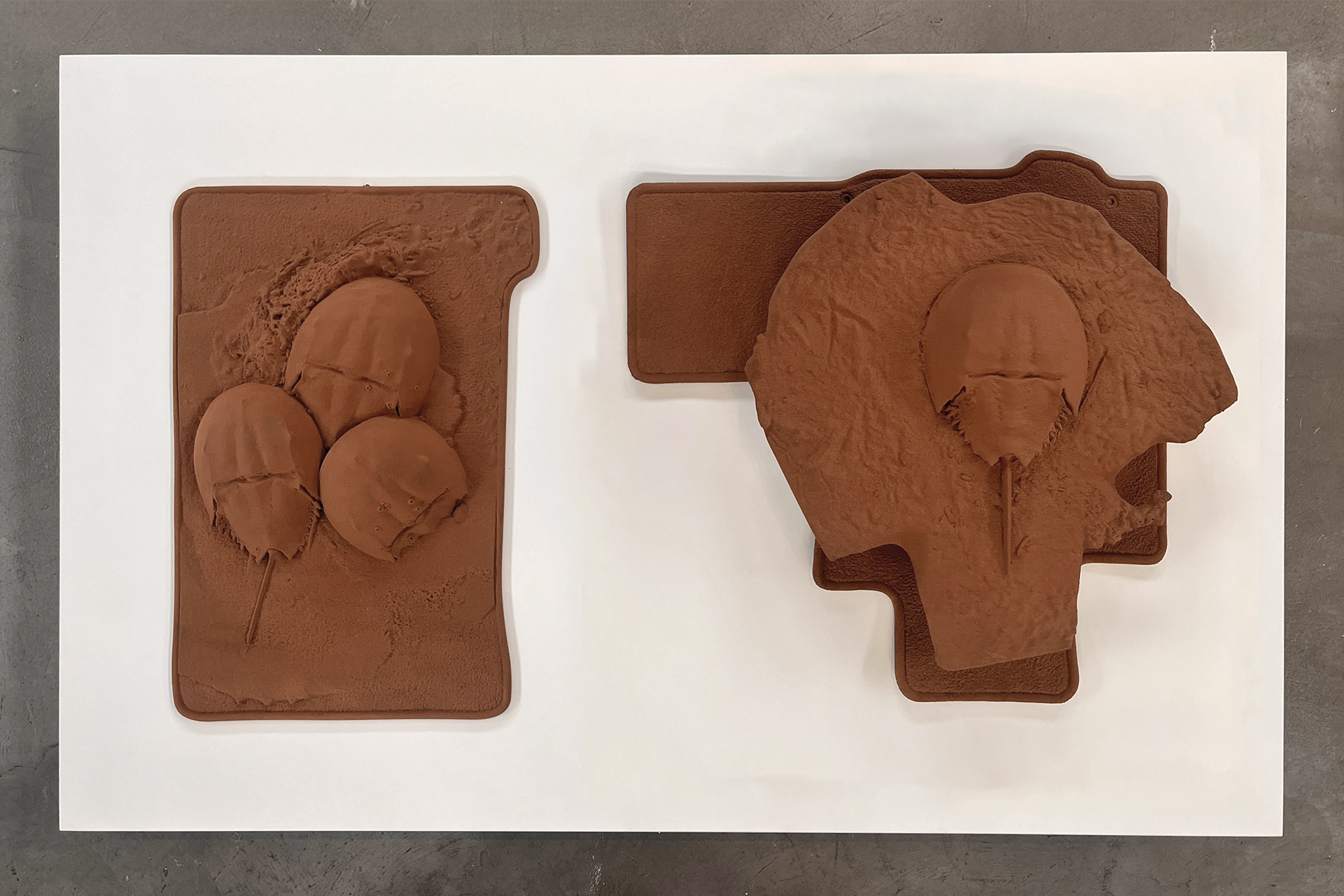
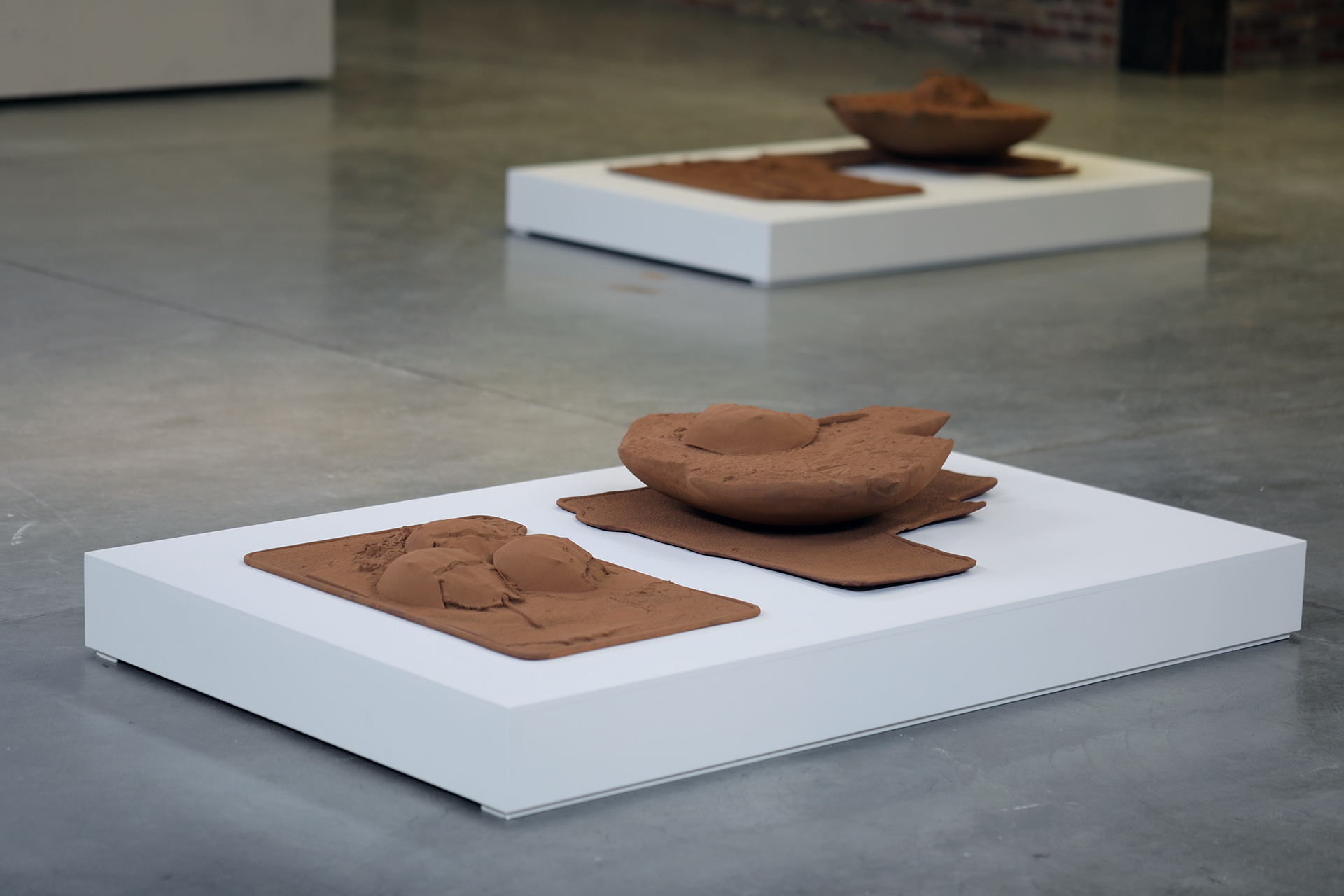
2024
Mars Global Simulant (MGS-1) and high density urethane foam.
19 x 29 x 2 inches
2025
Mars Global Simulant (MGS-1) and high density urethane foam.
66 x 42 x 15 inches
Manufactured from minerals vastly distributed on Earth's surface to simulate soils found on another planet, Mars Global Simulant (MGS) is a standard analog based on data collected from the Mars Science Laboratory Curiosity rover. Adopted for research, simulants are used to explore the mineralogical and atmospheric composition of other planets, as well as their "engineerability", asking deep questions about the material make-up of the universe, while speculating on the potential to one day inhabit, terraform, colonize, or otherwise exchange with or extract from other planets.
In this series titled "Salvages", I explore the hyperdislocated and composite qualities of simulants to collage and digitally reconstruct planetary terrain, exploring place, ground, bodies of water, traces of ecology and human imprints on the landscape. Sourced from 3D scans of multiple sites, the dimensions of these works extend across the spawning grounds of horseshoe crabs in the Delaware Bay, to the floor mats of flood salvaged cars, to riverbanks spanning the Mississipi Watershed from the Allegheny to the Kaw River.